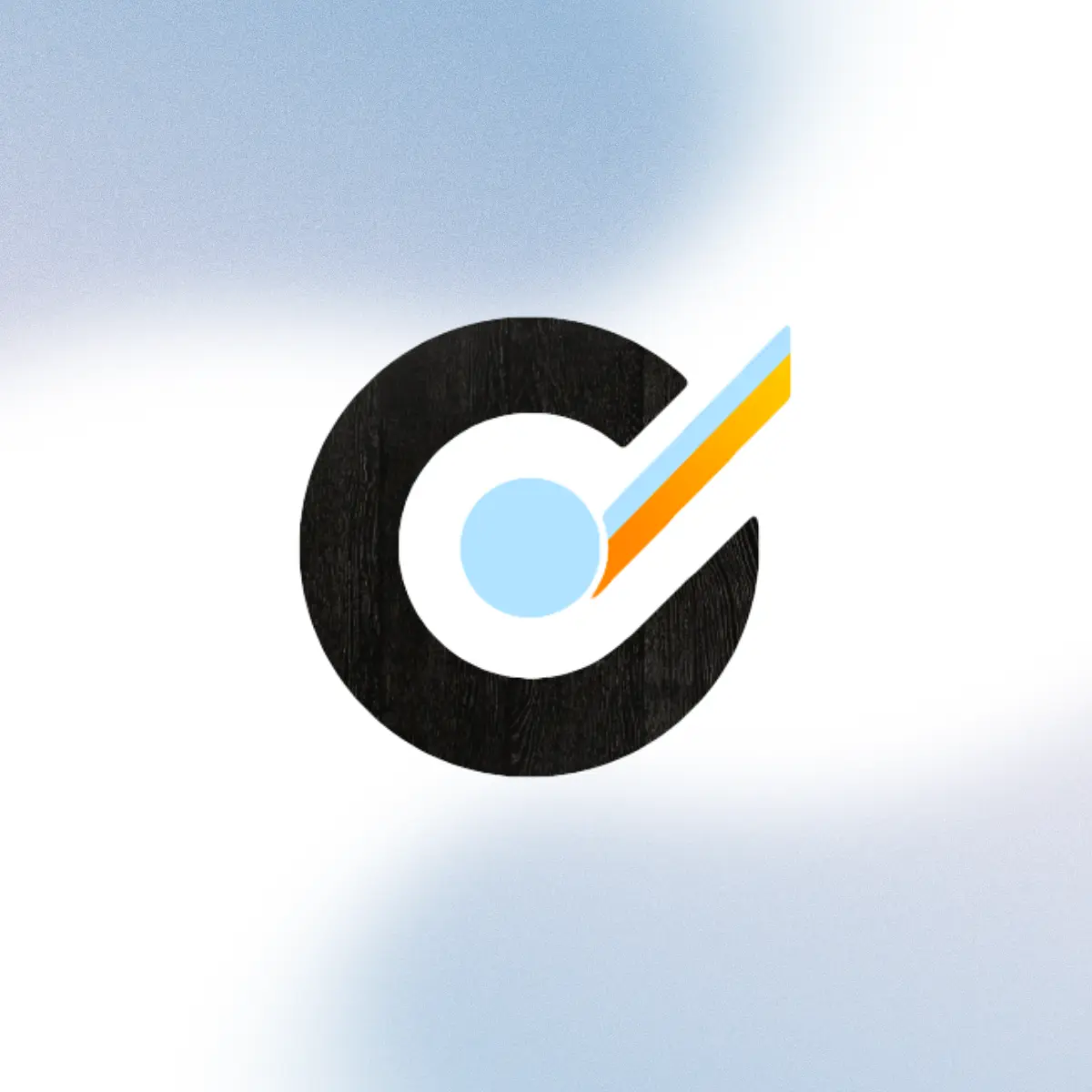Mechanical royalties are an important piece of the pie that makes up artist- and rights holder-payouts. That doesn’t make them simple to understand or calculate, though, and a lot goes into determining how much of these royalties make it to the artist. This guide will serve as an entry point for those looking to understand the fundamentals of mechanical royalties.
Whether you’re a financial management professional at a music company or new to the music industry, understanding mechanical royalties is key to understanding how artists—and the businesses associated with them—earn money.
These licensing payments to songwriters form a multibillion-dollar pillar of the music economy. However, the web of rates, rules, and reporting requirements is complex, even for veterans. Errors in calculations can mean lost income for artists.
This guide aims to demystify mechanical royalty fundamentals. We’ll explain what they entail and how rates and payouts are determined across formats. You’ll also learn what compliance pitfalls exist around tax liabilities and more.
Note: While this guide is primarily focused on how mechanical royalties are calculated and paid out in the US, it does touch on some international royalties issues as well.
What we cover
- What are mechanical royalties?
- Mechanical vs. performance royalties: A comparison
- Mechanical rights organizations
- The Music Modernization Act
- Calculating mechanical royalties
- Mechanical royalties in the streaming era
- Tax reporting for mechanical royalties
- Best practices for managing mechanical royalties in music businesses
- Take the headache out of royalty payouts
What are mechanical royalties?
Mechanical royalties are a way for songwriters to earn money when their compositions are reproduced and distributed in specific formats. These include channels like CDs, vinyl records, digital downloads, and streaming (though this one’s a bit more complex—more on that in a moment). Any time a master recording of a song is duplicated for commercial sale, the songwriter is owed a mechanical royalty.
These royalties came about in the early 20th century with the rise of player pianos. These neat technological marvels used perforated paper rolls to perform popular songs on their own. As the technology advanced to phonographs and vinyl records, the “mechanical reproduction” continued. The payment to songwriters came to be known as a mechanical royalty.
Today, mechanical royalties remain an important income stream for songwriters and artists. That is true whether their works get used by streaming services, downloaded as digital tracks, or included on physical albums.
For music businesses behind the scenes, handling accounting, calculating, and paying mechanical royalties is an essential task. As we’ll explore shortly, errors can have major financial implications.
Before we hop in, let’s get a couple of definitions out of the way:
- Songwriter – The person who creates the melodic, harmonic, and lyrical elements of a song
- Artist – The person who records the song
These hold two distinct copyrights: songwriters hold the rights to the lyrics and melody of a song, while performing artists hold the rights to a particular recording of a song, which is called a master recording. Both songwriters and artists get paid royalties.
Mechanical vs. performance royalties: A comparison
In the music industry, royalties come in different forms. Mechanical royalties are often confused with performance royalties. While they’re both forms of compensation for songwriters, they have some key differences:
Mechanical royalties get paid when a recorded song is reproduced and distributed. This includes scenarios like:
- Streaming on platforms like Spotify
- Downloading MP3 tracks from iTunes
- Manufacturing CDs to sell in stores
Performance royalties compensate songwriters when a song gets publicly performed. Common examples include:
- Streaming on platforms like Spotify
- Radio airplay & background music in retail stores
- Music on television shows
The distinction stems from fundamental ways composers generate money. Performance royalties relate to public displays where works get exposed to listeners. Mechanical royalties address the physical or digital reproduction and distribution of creative works. Different actions trigger different payments.
As you can see, royalties in digital streaming platforms like SoundCloud, Apple Music, and Spotify have blurred the lines. That’s because the stream is considered both a public performance and mechanical reproduction.
Mechanical rights organizations
Contrary to what many people believe, performance rights organizations (BMI, ASCAP) aren’t responsible for administering and paying this type of royalty. Instead, the burden falls on mechanical rights organizations. Given the complexities around calculating royalties, MROs play an invaluable role.
Like PROs, MROs act as middlemen between music creators and distributors. Key functions provided by MROs include:
- Licensing – MROs handle licensing agreements allowing distributors to reproduce and sell musical works. This alleviates the impracticality of songwriters negotiating with every potential distributor.
- Royalty collection – MROs have systems to collect mechanical royalties as music gets used and distributed. This saves individual songwriters from chasing down payments.
- Distribution – After collecting royalties, MROs pay out to publishers and songwriters based on usage and ownership data. Their vast databases enable accurate distribution.
In the United States, the Harry Fox Agency is the preeminent MRO. Many businesses across the industry leverage the Harry Fox Agency’s licensing, collection, and distribution services related to mechanical royalties.
Mechanical rights organizations like the Harry Fox Agency fill a vital gap that enables the music ecosystem to function at scale. No individual songwriter can monitor their works’ usage and collect owed royalties from the thousands of distribution channels globally. Likewise, labels, streaming platforms, radio stations, and other distributors could not pay each and every songwriter.
By consolidating administration and connecting the dots across massive datasets, MROs solve immense logistical challenges. They provide critical infrastructure for facilitating royalties payments to creators.
The Music Modernization Act
At one point, the owners of master recordings collected almost five times more per Spotify stream than the creators of the song. The systems and organizations in place to administer mechanical royalties were not set up to handle the challenges of digital streaming, with millions of dollars in royalties going unclaimed.
In 2018, the United States passed the Music Modernization Act (MMA) with the goal of making statutory licensing more fair for creators and more efficient for digital music providers. It overhauled various music licensing and royalty payment processes so that artists and songwriters can be better compensated in the era of music streaming. Here are a few important improvements the MMA made that impact mechanical royalties:
- It streamlined royalty payment matching via a public database connecting compositions to recordings and creators. This aims to minimize unattributable “black box” royalties.
- It standardized mechanical royalties in digital streaming services instead of unevenly negotiated deals.
- It changed the rate-setting approach based on the fair market value of compositions. This addressed complaints of unreasonable below-market streaming payouts.
- It established the Mechanical Licensing Collective to issue blanket mechanical licences for qualified streaming services—more on that in a moment.
The MMA brings welcome progress. Yet, debate continues around optimal legislation and rates as technology reshapes music consumption. Still, enhancing transparency and leveling the playing field marks an advancement for composers reliant on mechanical royalties.
The Mechanical Licensing Collective
The Mechanical Licensing Collective (MLC) went into effect in January 2021 and administers the blanket licensing system established by the MMA in the United States. Streaming services that used to rely on the Harry Fox Agency to administer mechanical royalties now work with the MLC to do so.
According to Spotify, the MLC receives notices and reports from digital music providers, identifies musical works and their owners for payment, and collects and distributes royalties to self-administered songwriters, composers, lyricists, music publishers, administrators, and CMOs.
The MLC has also built tools to help ensure that creators get paid properly, including a publicly accessible musical works database and a portal that creators and music publishers can use to submit and maintain their musical works data.
Calculating mechanical royalties
Multiple factors impact mechanical royalty calculations. Rates vary based on aspects like:
- Ownership – Royalties get divided across all credited songwriters and publishers based on ownership share. A song with three writers would divide earnings.
- Type of usage – Interactive streaming, limited downloads, physical sales, and sync licensing have different calculation methods. Rates also vary by country.
- Popularity – Increased demand for a song receiving lots of airplay or streaming can translate into higher royalty rates for rights holders.
While formula intricacies exist, two primary methods apply:
Statutory rate
The United States Copyright Act establishes a statutory per-unit rate for mechanical royalties on reproductions like sales or downloads, determined by the Copyright Royalty Board. In other words, the government sets this rate to ensure fair use. This rate gets adjusted periodically for inflation.
The current statutory rate is 12.4¢ per track or 2.39¢ for each minute of playing time, whichever is greater. If an artist sells 100,000 song downloads in a month, the mechanical royalties would equal $12,400 (100,000 multiplied by the $0.124 rate). Note that songs over 5 minutes in length earn an additional 0.0175 cents per minute.
This “penny rate” method of calculating mechanical royalties is used in both the US and Canada. In Europe, mechanical royalties are based on a percentage of what is known as “PPD” or “published price to dealer”—the record company sales price to retailers.
Percentage of revenue
For interactive streams, mechanical royalties use a percentage of service revenue. This model is platform-centric, meaning each platform can set its own rates. On Spotify, the split is 70/30, with 30% going to the platform. That is equivalent to roughly $0.003 to $0.005 per stream for the rights holders.
These examples provide simplified snapshots of mechanical royalty calculations. Many additional intricacies apply in practice across formats and countries. But this grounding should provide context for accounting teams managing payouts.
Complexities associated with mechanical royalties
Calculating music royalties is a complex task. Many factors, like a song’s ownership, contributors, usage type, country policies, and more influence final payouts. Automation helps, but human verification is still essential.
Consider an album credited to a solo artist that sells one million copies. The mechanical royalties may seem straightforward to calculate the statutory rate.
But what if that artist is a band with three members? Ownership splits need to be determined.
Or if multiple writers or producers deserve royalties based on creative contributions. Ownership percentages must be codified in contracts and systems.
Add territorial legal nuances, inaccuracies in usage reporting, streaming platform payment policies, and other variables – and the complexity rises. Mistakes lead to faulty payouts, angry creators, and potential lawsuits.
The perils of poor accounting for mechanical royalties illustrate why music industry financial management teams must have strong processes, skilled staff, and reliable data. Proper calculations ensure fair compensation for artists. However, problems can lead to significant losses or misallocation among numerous micro-payments.
Mechanical royalties in the streaming era
The rise of streaming platforms like Spotify has brought shifts across music royalties. For mechanical royalties, challenges have emerged around setting equitable rates in the streaming pay model.
Underlying music industry economics can make determining rates complex. Key dynamics include:
- Listener payment asymmetry – In monthly streaming subscriptions, light listeners subsidize heavy listeners. Ensuring fair creator payouts across this spectrum is difficult.
- Platform variances – Terms around revenue definition, reporting standards, and more vary widely across platforms like Apple Music vs. YouTube. Standardization is lacking.
- Opaque royalty pools – Deductions applied to royalty pools that fund payments are often unclear upfront to artists. This enables platforms to capture more value.
The debate over fair mechanical royalty rates for streaming persists due to the many complexities surrounding this fairly new technology. Music creators claim the tiny fractions of a penny per play do not fairly compensate them for lost physical sales. Platforms highlight their on-demand access, which boosts total plays beyond what was possible with physical sales. Legal and regulatory battles continue to seek a resolution.
As the landscape evolves, music accounting teams must stay updated on shifts that influence mechanical royalty calculations and payout accuracy.
The streaming debates illustrate the perpetual balancing act across music industry stakeholders. Platforms must cover operational costs while keeping consumer prices reasonable to attract subscribers. Artists and songwriters aim to earn sustainable livelihoods from their work. Labels and publishers invest in talent development.
In an ideal world, win-win scenarios emerge, benefiting all parties. However, opposing incentives often generate friction.
Tax reporting for mechanical royalties
Once songwriters sign up with an MRO, they start receiving important tax paperwork each year related to any royalties earned. These industry organizations report composer income on common IRS forms.
Individual songwriters may receive a Form 1099-MISC documenting $10 or more in royalties. This same form also gets used for larger payments made to incorporated songwriter business entities like LLCs. Meanwhile, solo songwriters functioning as freelancers receive Forms 1099-NEC for royalties exceeding $600.
The first step is to tally up the royalty totals shown on whichever tax paperwork these collection organizations send. There are also annual deadlines to report taxable income to avoid potential issues with the IRS.
Beyond submitting Forms 1099, additional considerations around royalty compliance exist:
- Properly tracking ownership shares across contributors
- Understanding tax nuances if writers funnel royalties into formal businesses
- Applying income withholding in certain non-US cases
For example, foreign songwriters face income tax withholding on royalty earnings depending on their country of residence and existing tax treaties. To avoid unnecessary withholding, the proper forms must be furnished:
- Form W-8 BEN for foreign claimant exemptions
- Form 1042-S for international income tax withholding
Given the financial implications of inaccurate music royalty tax reporting, music companies should consult legal and accounting advisors to ensure full compliance.
Like most income streams, mechanical royalties count as taxable earnings for songwriters in the US. Proper tax forms for music royalties make it feasible for creators to report the payments and remit owed tax amounts. This gets factored in when writers file their annual personal or business returns.
Best practices for managing mechanical royalties in music businesses
Between complex calculations and evolving streaming economics, administering mechanical royalties is challenging. For music companies, some recommended best practices include:
Leverage technology
Alleviate payment predicaments through secure automation solutions like Trolley to send royalty payouts worldwide with ease. Trolley’s integrated global network facilitates payments reaching the right hands without manual effort wasted.
Automation solutions allow composers and collaborators to be satisfied faster with error-free distributions in local currencies and languages. Finance teams save countless hours previously devoted to customer service inquiries, status monitoring, and fixing inevitable misrouted wires. More music business productivity redirects towards creativity.
Ultimately, seamless payment experiences are made achievable through fintech progress. And that means more revenues resonating across the ecosystem to create more masterpieces.
Centralize data
Maintaining clean, integrated systems makes it easier to map the connections across recordings, ownership percentages, songwriter details, and channels. Accurate attribution underpins proper mechanical royalty administration.
Consolidate payments
Where possible, consolidate royalty payments across multiple distribution channels and periods. This cuts transaction fees and delays in getting creators paid. For instance, if music is played on streaming platforms in different countries, combine the mechanical royalties earned into one large payment for that period.
Hire specialized teams
Hiring dedicated staff with mechanical royalty expertise is advised. Consider outsourcing to specialists if needed. For example, a music finance professional could serve as a Mechanical Licensing Coordinator to liaise with publishers, CMOs, and distributors.
Maintain vigilant compliance
Financial penalties around inaccurate music royalty tax reporting or unpaid royalties can be severe, whether it be copyright infringement penalties, fines for underreporting to the IRS, or other legal issues. Ensuring diligent legal and accounting compliance across calculations, documentation, filing deadlines, and more remains imperative. Leave no room for errors, and prioritize transparency.
Making mechanical royalty management run smoothly takes investments in tools, people, and processes. But given the core role these royalties play in funding artists and songwriters, music businesses must get it right. When the backbone administration falters, so does the entire ecosystem.
Smooth and accurate mechanical royalty administration means songwriters get rightfully compensated in a timely manner. They can focus more energy on creating music versus having to chase errant payments.
There are no shortcuts if music businesses aim to sustain a healthy ecosystem with composers incentivized to keep enriching the world through their works.
Take the headache out of royalty payouts
Getting those hard-earned royalties into artists’ pockets should be smooth sailing, not a massive headache. But between tax forms for music royalties, global banking complexities, and the maze of international regulations, paying creators isn’t easy as we’d all like it to be.
Trolley handles the heavy lifting of paying artists via payout automation purpose-built for modern music companies.
Let Trolley deliver your royalty distributions worldwide so you stay focused on bigger goals. Keep your data centralized and connected with Trolley’s end-to-end platform plus ERP sync. Onboard your artists, verify their identities, pay globally, and stay tax compliant, all in one place.
Our real-time dashboard gives your artists the visibility and transparency they deserve, with your brand at the front and center. Plus, recipients can choose the payment methods that work best for them, so you can strengthen your relationships while making tax-compliant payouts to over 210 countries and territories.
Learn why companies like SoundCloud, United Masters, Soundrop, CD Baby, and more trust Trolley to pay over 1.5 million musicians worldwide by getting in touch today.







